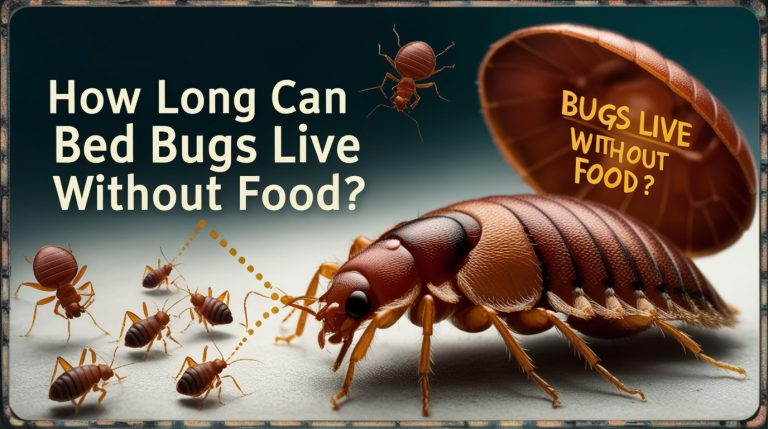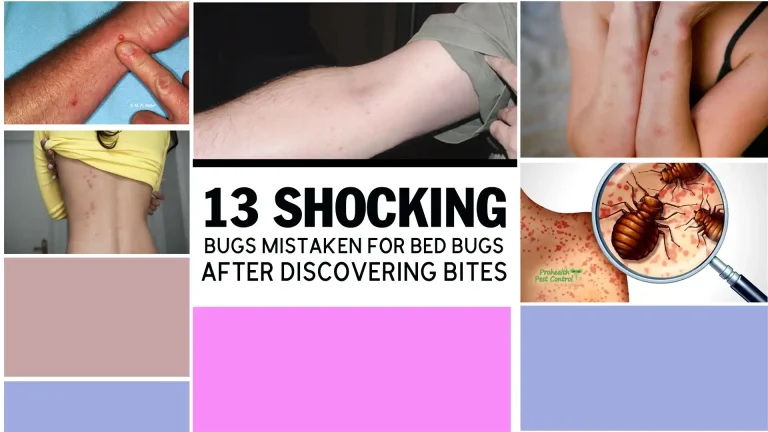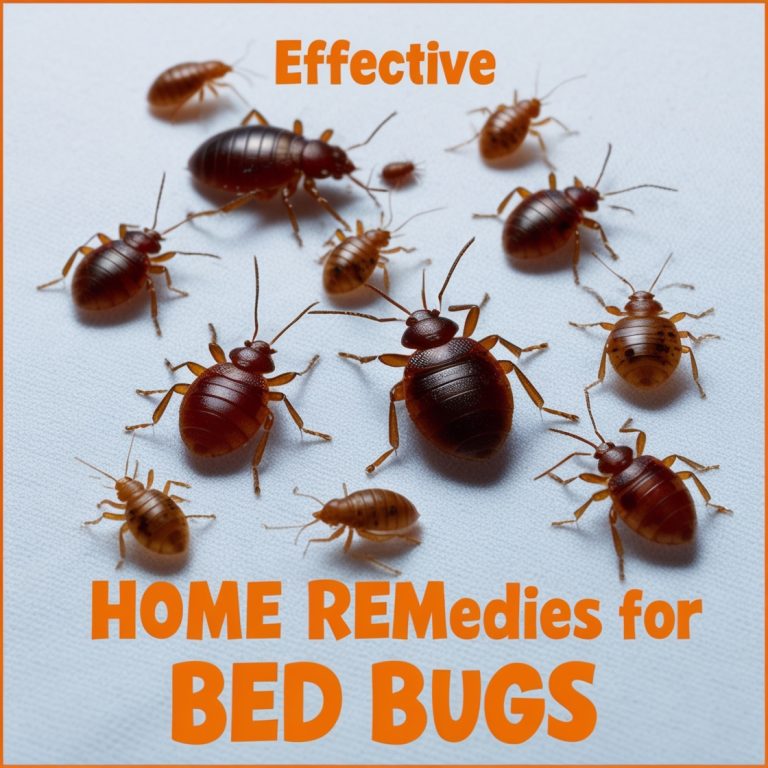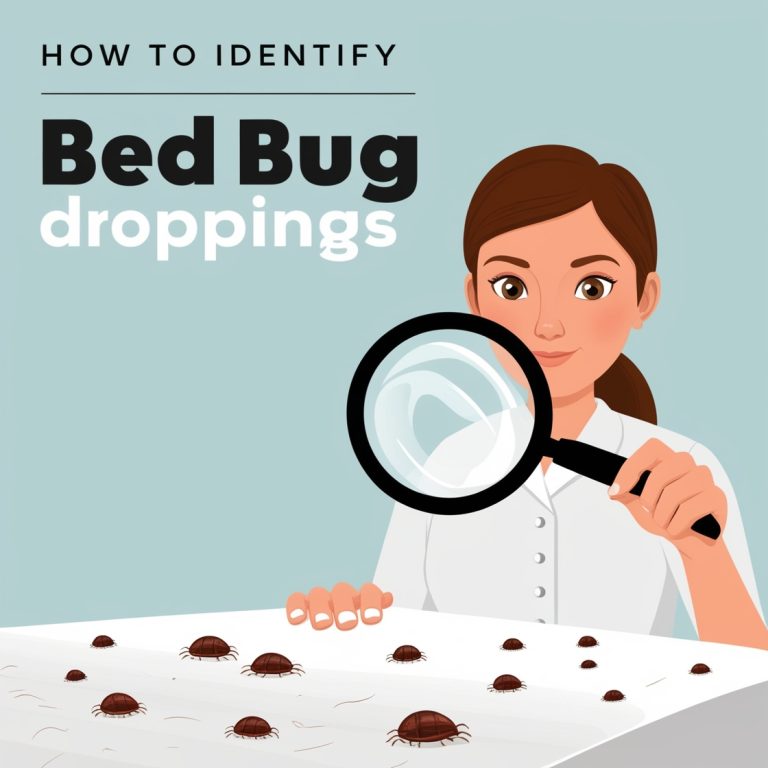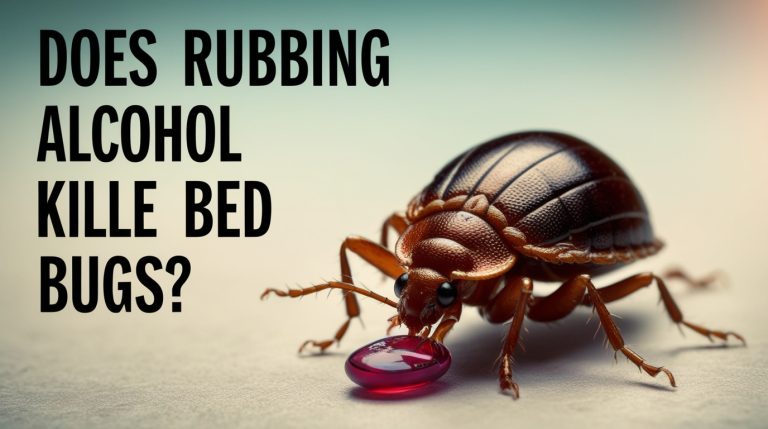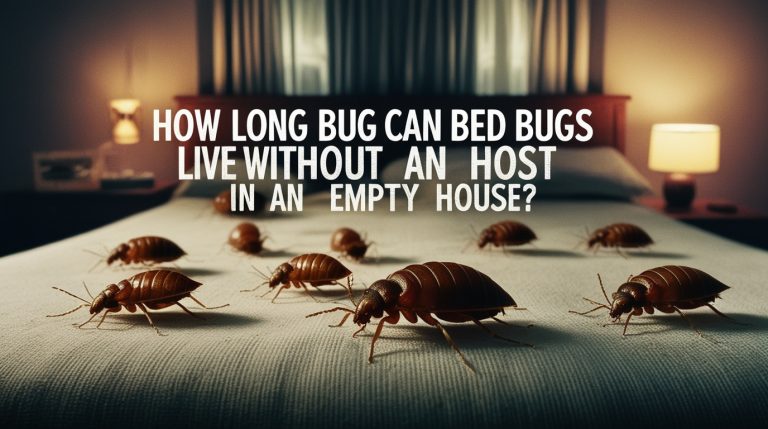Do bed bugs stay on your skin after a shower? The Truth Revealed!
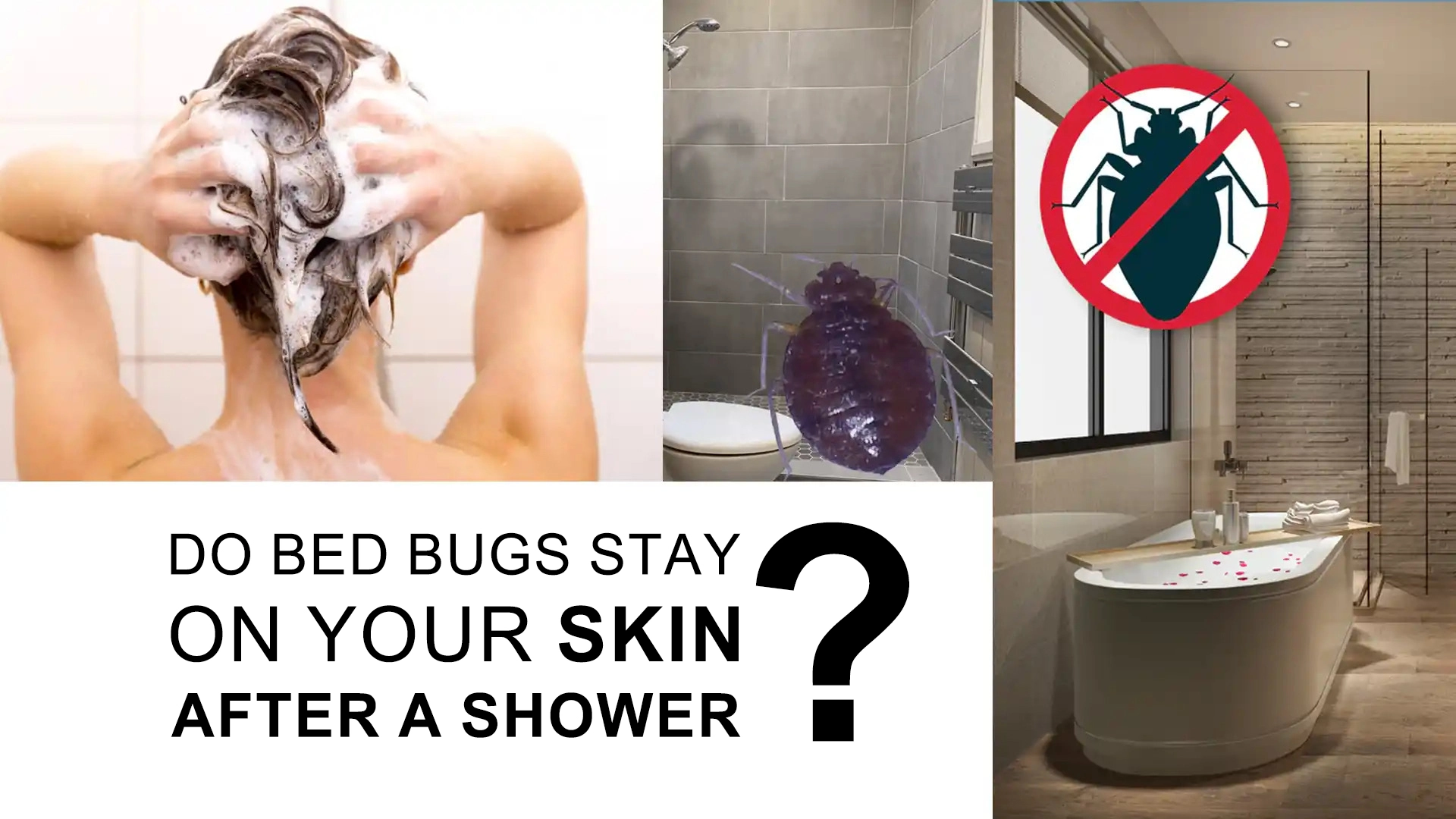
- Do Bed Bugs Stay on Your Skin After a shower?
- Can Bed Bugs Escape Shower Steam and Heat?
- How Do Bed Bugs Feed?
- Do Bed Bugs Drown?
- Can Bed Bugs Stay on Your Clothes All Day?
- Where Can You Get Bed Bugs?
- How to Avoid Bringing Bed Bugs Home
- Can Bed Bugs Live on Your Body?
- Do Bed Bugs Bite Your Scalp?
- Can Bed Bugs Lay Eggs in Your Hair?
- Do Bed Bugs Spread From Other Sources?
- Do Bed Bugs Infest Bodies Like Lice or Scabies?
- Do Bed Bugs Transmit Disease?
- Do Bed Bugs Release Stronger Poisons When Threatened?
- Do bed bugs attach to your skin?
- Can bed bugs lay eggs on humans?
We’ve all had those nagging questions about bed bugs at some point. Do they actually stay on your skin after you take a shower? Can they survive drowning under streaming water? What about hiding in your hair or other unmentionable places?
This post will reveal the whole truth about what bed bugs can and can’t do after a shower, bath, or another type of cleaning. You’ll get answers to all your burning questions, like:
- Can bed bugs stay on your body all day?
- Do hot showers kill bed bugs?
- What temperature water kills bed bugs?
- Do bed bugs get attach themselves to skin?
- Can bed bugs lay eggs on humans?
We’ll uncover whether bed bugs can really withstand heat and water, if they will stay on your body after washing, and how to fully get rid of bed bugs after exposure.
Let’s dive in to reveal the truth about bed bugs’ resilience in the face of showers and baths!
Do Bed Bugs Stay on Your Skin After a shower?
The most pressing question many have about bed bugs and bathing is:
Do bed bugs stay on your skin after a shower or bath?
The good news is that a thorough showering will get rid of bed bugs from your skin. Showering and bathing washes away and kills bed bugs and eggs on the surface of your body.
So you don’t have to worry about bed bugs clinging to your skin through a soapy wash! Hot water and vigorous scrubbing also helps kill any bugs on the skin’s surface.
With that said, it’s still possible for bed bugs to survive quick rinses if you don’t wash thoroughly with soap. Doing a full scrub down with soap and hot water is key.
Can Bed Bugs Escape Shower Steam and Heat?
Hot showers around 120 F effectively flush bed bugs from skin before they adapt. Higher adjustable temperatures up to 130-140 F kills faster while remaining safe for most individuals.
Small children, elderly, or those insensitive to heat require monitoring to prevent burns. But the majority can tolerate brief exposure to steamy spray without issues.
Contained steam boxes reaching 150 F+ prove 100% lethal in 1-2 minutes. Repeat as needed until all signs vanish.
Try trapping larger infestations under transparent oven bags secured tightly to skin using tape. This smothers bed bugs when coupled with steaming.
How Do Bed Bugs Feed?
To understand why washing works so well, it helps to know how bed bugs feed and attach in the first place.
Bed bugs use their sharp “beak” to pierce human skin and suck blood for nutrition. They inject a bit of saliva into the skin to keep blood flowing.
The feeding process takes 3-12 minutes. Bed bugs tend to feed mostly at night when hosts are sleeping.
Do Bed Bugs Drown?
When it comes to bathing, many also wonder:
Do bed bugs drown?
The answer is yes, bed bugs do drown when fully immersed in water.
Being terrestrial insects, bed bugs require air to breathe and cannot survive long underwater. Hot, soapy water is especially lethal.
So as long as you fully submerge with soap while bathing, any bed bugs on your skin will meet their demise!
Can Bed Bugs Stay on Your Clothes All Day?
You might also be wondering if bed bugs can live on clothing you plan to wear all day.
The answer is yes. Bed bugs can survive for long stretches on fabric and in clothing folds. Their flat bodies allow them to press into crevices and hide.
So if bed bugs have recently hitched a ride on clothes, they may remain all day.
Regular washing on hot, however, kills bed bugs and eggs on clothing. So it’s wise to toss exposed clothes in the laundry.
Where Can You Get Bed Bugs?
Bed bugs often sneak their way into new environments through various means, including:
Friends and Family: Visitors resting on infested beds and upholstery easily transport bed bugs back home in clothing and luggage. Likewise, bed bug intro’s occur when staying with others. Take caution when expose and isolate/wash belongings after.
Work: Bed bugs clandestinely crawl their way into offices through shared furniture, hand-me-downs, and receiving donated items. Warehouse workers also risk exposure through processing incoming stock. Carefully inspect any newly added furnishings or materials before installing long term.
Neighbors: Since bed bugs spread room to room in shared living spaces, turnover in multi-unit housing poses huge risks. Newcomers often unknowingly bring infestations reinforcing spreading. Promptly report suspected activity in conjoining units/rooms before exponential growth.
Second-Hand Furniture: Pre-owned beds, couches, and cushions often harbor bed bugs inside the deeper crevices and seams. Always thoroughly scrutinize any used furniture inside, underneath, and behind before moving into private spaces. opt for pieces with smooth metal or plastic vs. wood frames and textiles.
Traveling: Hotel beds represent ground zero for bed bug exposure, especially in cluttered low-cost establishments with high guest turnover. But even luxury resorts battle periodic infestations. Carefully inspect rooms on arrival pulling back sheets, lifting mattresses, and checking behind headboards. Never fully unpack into drawers and shelves.
Public Transport: Planes, trains, buses, and shuttles provide optimal conditions for bed bugs with ample hosts and free rides. Avoid placing bags in overhead bins or carts. Keep possessions on lap or between feet during transport. Transfer items straight to a hot dryer or freezer upon returning home.
How to Avoid Bringing Bed Bugs Home
While bed bugs cannot truly live on you, they absolutely can infest your living spaces if brought inside.
It’s smart to take precautions to avoid bringing bed bugs back home with you. This includes careful inspection when exposed.
Here are crucial tips to prevent bed bug infestations:
Protecting Yourself When Traveling:
- Carefully inspect hotel rooms on arrival. Check the mattress seam, box spring, headboard, and furniture cracks.
- Keep luggage closed and sealed or in the bathtub when not using it.
- Only unpack what you need into provided furniture like drawers or shelves.
- Wash your clothing all after returning, drying fully on hot.
Protecting Your Home:
- Thoroughly examine any used furniture before bringing inside. Check all sides and undersides.
- Quarantine yard sale or second hand items outside the home in sealed bags for a week. Inspect thoroughly again before moving inside.
- Caulk and seal any cracks in walls or flooring to eliminate bed bug hiding spots.
- Cover mattresses and box springs with waterproof, zipped encasements designed to block bed bugs.
- Treat infestations immediately with freeze treatments or non-chemical means like desiccant dusts. Follow up regularly.
Using Pesticides:
Only use pesticides if absolutely needed for heavy infestations. Follow all safety guidelines:
- Never spray pesticides directly on mattresses or sofas to avoid human exposure.
- opt for ready-to-use products over concentrated liquids that require mixing.
- Strictly follow all label instructions for handling, equipment, protective gear, and application.
- Properly ventilate areas during and after spraying.
Can Bed Bugs Live on Your Body?
So that covers bed bugs’ usual habitats – but what about making a home on human bodies themselves?
Can bed bugs live on your body, setting up camp on exposed skin or hair until they’re good and ready to feed again?
The answer is no. While bed bugs feed on blood, human bodies do not offer what bed bugs need for actual survival and reproduction.
They cannot permanently cling to hair or skin. Instead, bed bugs prefer to live in dark, isolated shelters with cracks and crevices. That’s where bugs can hide and lay their eggs in clusters.
So while bed bugs may hitch short rides to move locations, they will not – and cannot – permanently live on your body!
Do Bed Bugs Bite Your Scalp?
The answer is yes, bed bugs can and will bite into scalp skin to feed on blood. But again, they do not set up permanent residence or lay eggs.
A thorough wash of the hair and scalp with shampoo and conditioner helps remove and kill bed bugs that may feed there.
Can Bed Bugs Lay Eggs in Your Hair?
While bed bugs do feed on the scalp opportunistically, they cannot use your hair to breed or spawn.
Again, bed bugs rely on dark, dry harborage to lay eggs safely in clusters. Human hair does not provide the right environment, nor nutrition.
So rest assured, hair is not at risk for bed bug infestation!
Do Bed Bugs Spread From Other Sources?
Bed bugs sneak their way into homes through:
- Used furniture & mattresses
- Cluttered spaces with limited cleaning
- Apartment turnovers and moves
- Nearby travelers and roommates
Proper identification helps halt early stage takeovers before exponential spreading.
Learn the common signs:
- Itchy red bite marks in lines of 3
- Blood stains from squashed feedings
- Musty sweet odor
- Molted skins and eggs casings
Take rapid action at the very first indicators. Preventative response limits costs, efforts, and misery overall!
Do Bed Bugs Infest Bodies Like Lice or Scabies?
No. While some pests entrench on living skin, bed bugs cannot survive long directly on humans. They perish without the specific conditions listed below:
- Stable room temperatures around 70-80 F
- Higher humidity levels averaging over 50% RH
- Complete darkness mimicking deep harborages
- Continual access to sleeping hosts for feedings
- Undisturbed spaces to securely lay eggs
Temporary rides to move locations present only limited risk. Overall, bed bugs cannot truly inhabit human bodies long term.
Do Bed Bugs Transmit Disease?
Unlike pests like lice, bed bugs are not shown to spread contagious illnesses under normal circumstances. Very rare hypersensitivities may produce symptoms like:
- Itchy wheals and blistering reactions in sensitive individuals
- Potential iron deficiency from chronic exposure
- Secondary infections if picking bloody bites
Overall though, bed bugs do not inherently transmit pathogens or spherical effects. Their true harm lays more in lost sleep and comfort, not sickness.
Do Bed Bugs Release Stronger Poisons When Threatened?
No, bed bugs completely lack venom or toxic secretions. They bite using sharp sterile mouth parts without transmitting venom.
And unlike bees, bed bugs do not sting in self defense. They rely solely on stealth and fast feet to hide when threatened.
Some individuals react skeletomuscularly to microscopic proteins left behind. But bed bugs themselves produce zero venoms or poisons. Their true harm is lost sleep and comfort.
Do bed bugs attach to your skin?
Bed bugs only attach briefly to pierce the skin with their snout-like “beak” while feeding. They do not have appendages or sticky substances to otherwise adhere to skin. Washing easily removes their temporary physical presence.
Can bed bugs lay eggs on humans?
Absolutely not! Laying eggs requires a very specific set of conditions bed bugs cannot find on human bodies. Areas like hair, ears, noses, and genitals do not offer suitable harborage or nutrition for breeding. Only their usual habitats like mattress cracks allow egg laying.
So in the battle between bed bugs and bathing, you can rest assured that hot water, soap, and scrub brushes are victorious. Showering and bathing undeniably send bed bugs down the drain!

